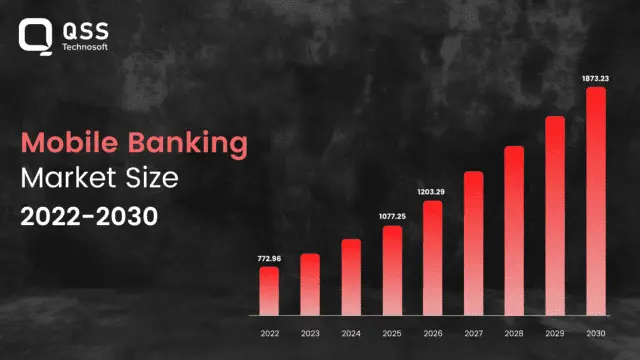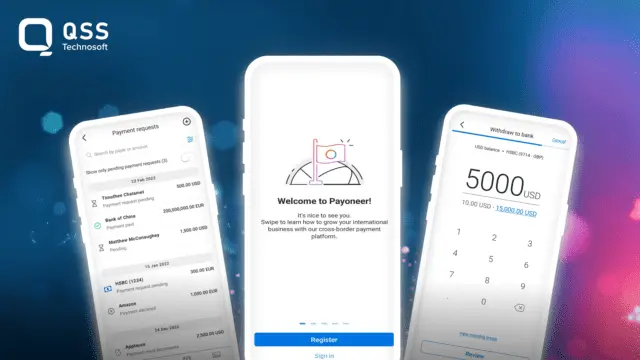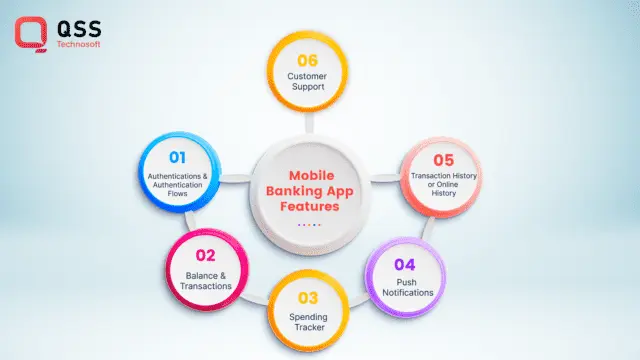How much does it cost to build a mobile banking app like Payoneer? This is a common question among business owners interested in expanding their company’s outreach and revenue through mobile banking apps.
Mobile banking applications have become a necessary component of our everyday lives due to the quick speed at which digitization is occurring. The convenience they offer in performing various banking transactions has transformed them from exceptions to norms. Take a moment to imagine a world where you can effortlessly check your balance, manage your accounts, transfer funds, and make payments – all from the comfort of your smartphone. It’s no wonder that many business owners are now interested in developing their own mobile banking apps like Payoneer to enhance their company’s outreach and boost revenue.
But let’s address the big question – how much does it actually cost to build a mobile banking app like Payoneer? Well, the answer is not as straightforward as we might hope. The cost of developing a mobile banking app can vary significantly based on various factors such as the app’s complexity, functionalities, design, security features, and the development team involved. To give you some perspective, let’s explore some statistical data.
According to a report by Vantage Research, The global mobile banking market is valued at USD 772.96 million in the year 2022 and is project to reach a value of USD 1873.23 million by the year 2030. The global market is projected to grow exhibiting a CAGR of 11.70% over the forecast period.

Payoneer has gained immense popularity among individuals and businesses worldwide. Its success serves as an inspiration for other entrepreneurs looking to develop their own mobile banking apps.
In this article, we will discuss these factors in detail to help us understand the cost of developing a mobile banking app like Payoneer.
Read Our Page : Complete Guide to Mobile App Development in 2023
Understanding Mobile Banking App Like Payoneer
Mobile banking apps, like Payoneer, have revolutionized the way we manage our finances. These apps allow users to perform various banking transactions, such as account balance inquiries, fund transfers, bill payments, and even international money transfers, all from the convenience of their mobile devices.

One aspect that makes mobile banking apps like Payoneer possible is the use of secure communication protocols such as SSL/TLS, which encrypts data transmitted between the app and the server. This ensures that the user’s sensitive financial information remains protected from unauthorized access.
Another important feature is the integration with third-party payment gateways and financial institutions. For example, Payoneer uses APIs to communicate with various banking systems to retrieve account information and facilitate secure funds transfers.
A example of how these apps work is as follows:
- Users open the Payoneer app on their mobile devices and authenticate using their credentials.
- The app securely communicates with the server using SSL/TLS.
- The app retrieves the user’s account information, including balance and transaction history.
- The user initiates a funds transfer to another Payoneer account, providing the recipient’s details.
- The app securely communicates with the server, which verifies the transaction and initiates the transfer through the appropriate banking system.
- The user receives a confirmation of the successful transaction.

Understanding these aspects of mobile banking apps like Payoneer is important in order to appreciate the level of security and functionality they offer to users.
Read Also : How Much Does it Cost to Build React Native Based App? – QSS
Benefits of Building Mobile Banking App Like Payoneer
Payoneer has established itself as a leading global payments platform, and its mobile banking app is a testament to the company’s commitment to providing innovative financial solutions.
Let’s explore the six benefits of building a mobile banking app like Payoneer.
Enhanced Accessibility:
Payoneer’s mobile app allows users to access their accounts effortlessly, irrespective of their location. This is made possible through a combination of technologies such as cloud computing, APIs (Application Programming Interfaces), and responsive design.
The app’s responsive design ensures that it adapts to different screen sizes, making it accessible on smartphones, tablets, and even smartwatches. By using cloud computing and APIs, Payoneer’s app can securely synchronize user data across multiple devices, allowing users to seamlessly switch between devices while accessing their financial information.
Security Features:
Payoneer prioritizes the security of its mobile banking app. It employs robust encryption algorithms to protect user data from unauthorized access or interception.
Additionally, the app implements multi-factor authentication (MFA) techniques, such as SMS verification codes, biometric authentication (fingerprint or facial recognition), and device recognition, to ensure that only authorized users can access their accounts. These security measures provide users with peace of mind when conducting financial transactions through the app.
Personalized User Experience:
Payoneer’s mobile banking app leverages technologies like machine learning and data analytics to offer a personalized user experience. Through intelligent algorithms, the app can analyze user behavior, transaction history, and financial patterns to provide tailored recommendations and notifications.
For instance, the app can suggest money-saving tips based on a user’s spending habits, or notify users about potential fraudulent activities based on unusual transaction patterns.
Faster Transactions:
Payoneer’s mobile app enables users to execute financial transactions swiftly and efficiently. By integrating with real-time payment systems and utilizing APIs of banking partners, the app can facilitate instant money transfers with minimal processing time.
For instance, the app can use technologies like Immediate Payment Service (IMPS) or Real-Time Gross Settlement (RTGS) to transfer funds within seconds, even across different banks or countries.
Expense Tracking:
Payoneer’s app simplifies expense tracking by automatically categorizing transactions and providing detailed insights into spending patterns. Using AI and machine learning, the app can analyze transaction descriptions and amounts to automatically categorize them as food, travel, shopping, or any other relevant category.
Users can then view comprehensive spending reports, graphs, and charts within the app to gain a clear understanding of their financial habits and make informed decisions.
Read Also : Spotify Clone: A Step-by-Step Guide to Developing Your Music Streaming App
Seamless Integration:
Payoneer’s mobile banking app seamlessly integrates with other financial apps and services, providing users with a holistic banking experience. For example, the app can integrate with popular accounting software, allowing freelancers or small businesses to keep track of their finances seamlessly.
It can also integrate with e-commerce platforms, enabling sellers to manage their Payoneer payments directly from their online store’s dashboard.
The Process behind Building Mobile Banking App Like Payoneer
Building a mobile banking app like Payoneer involves a comprehensive and complex process that requires a deep understanding of both financial services and mobile app development.
Below are the key steps involved in creating a mobile banking app similar to Payoneer:
1. Requirement Analysis:
- Conduct surveys, focus groups, or user interviews to understand user needs and pain points.
- Analyze the competitor’s mobile banking apps to identify key features and functionalities that users expect.
- Analyze regulations and compliance requirements to ensure the app meets industry standards and requirements.
- Create user stories and personas to define the scope and objectives of the project.
- Develop a detailed product roadmap and project plan to ensure timely delivery.
2. Security Implementation:
- Use SSL encryption and two-factor authentication (TFA) to protect sensitive data and prevent fraudulent activities.
- Implement biometric authentication systems, such as facial recognition or fingerprint scanning, to enhance security and user convenience.
- Use tokenization to protect against credit card fraud and account takeover attacks.
- Develop a comprehensive security policy that includes regular audits, bug bounties, and security certifications, such as ISO 27001 or SOC 2 Type II.
- Conduct regular penetration testing to identify and eliminate security vulnerabilities.
3. User Experience Design:
- Implement an intuitive and responsive design to enhance usability across different device screen sizes.
- Use standard design patterns and conventions that users recognize from other apps.
- Implement clear navigation and minimalistic design to create a clean and uncluttered user interface.
- Use animations and micro-interactions to enhance the user experience and delight users.
- Test the design with real users through usability testing and A/B testing.
4. Integration with Payment Gateways:
- Implement APIs for integration with payment gateways, such as PayPal or Stripe, to ensure secure and fast transactions.
- Use blockchain or distributed ledger technology to enhance the security and transparency of transactions.
- Implement anti-money laundering (AML) and know-your-customer (KYC) processes to ensure regulatory compliance and prevent fraudulent activities.
- Implement currency exchange rates to allow users to transact in their local currencies.
- Develop a comprehensive payment history log to allow users to track their transaction history.
5. Real-Time Updates and Notifications:
- Implement push notifications to keep users informed about account activities and transaction alerts.
- Use real-time APIs to create dynamic dashboards that update in real-time.
- Develop a messaging feature that allows users to communicate with customer support in real-time.
- Implement webhooks to trigger real-time events and updates within the app.
- Use analytics and data visualization tools to provide real-time insights to users.
Read Also: How to Develop a Mobile App like JIO TV?
Cost breakdown of Building Mobile Banking App Like Payoneer
Building a mobile banking app like Payoneer involves various costs that contribute to the overall cost breakdown.
Here’s the proper breakdown of components that affect the cost of building a mobile banking app similar to Payoneer.
Development Team:
The cost of the development team is a significant component. Hiring experienced professionals such as developers, designers, testers, and project managers will ensure quality development but may increase the overall cost.
On average, the cost of a development team can range from $50,000 to $150,000, depending on the size and expertise of the team.
Design:
Design plays a crucial role in creating an intuitive and user-friendly mobile banking app. The cost of design includes creating wireframes, prototyping, and UI/UX design. The complexity of the design and the number of screens involved can impact the overall cost.
Design costs can range from $10,000 to $40,000, depending on the requirements.
Front-end and Back-end Development:
Building the front-end and back-end of the mobile banking app is another significant component. The front-end development involves creating user interfaces and implementing design elements. The back-end development includes server-side programming, integration with APIs, and database management. The complexity of features and functionalities required will affect the development cost.
On average, front-end and back-end development costs range from $30,000 to $100,000
Security:
Implementing robust security measures is critical for a mobile banking app. The cost of security includes encryption, two-factor authentication, and secure data storage. The level of security required and the compliance standards to be met will impact the cost.
On average, security costs can range from $10,000 to $30,000.
API Integration:
Integrating with third-party APIs, such as payment gateways, identity verification services, and banking systems, is necessary for a mobile banking app. The complexity of API integration and the number of APIs used will impact the cost.
API integration costs can range from $10,000 to $50,000.
Testing and Quality Assurance:
Testing and quality assurance are crucial to ensure the app functions smoothly and securely. The cost includes functional testing, performance testing, security testing, and compatibility testing. The depth and extent of testing required will impact the cost.
On average, testing costs can range from $5,000 to $20,000.
Maintenance and Updates:
After development, ongoing maintenance, updates, and bug fixing are necessary. This includes updates to meet new regulations, fixing security vulnerabilities, and adding new features.
On average, maintenance and updates costs range from $10,000 to $30,000 per year.
Conclusion
Building a mobile banking app like Payoneer requires careful planning and consideration of various factors that contribute to the overall cost. From market research and design to development and post-launch maintenance, every step requires expertise and resources. As a user seeking to develop a similar app, it is crucial to partner with a reliable and experienced technology partner like QSS Technosoft. Our team of professionals understands the complexities of building a mobile banking app and can provide personalized solutions tailored to your specific needs.
Don’t hesitate to reach out to us at QSS Technosoft for a consultation and let us help you bring your vision to life.
We are proud to mention that our work has been recognized by leading B2B reviews and research platforms like GoodFirms, Clutch, MirrorView, and many more.


How Much Does it Cost to Build a Mobile Banking Apps Like Payoneer?